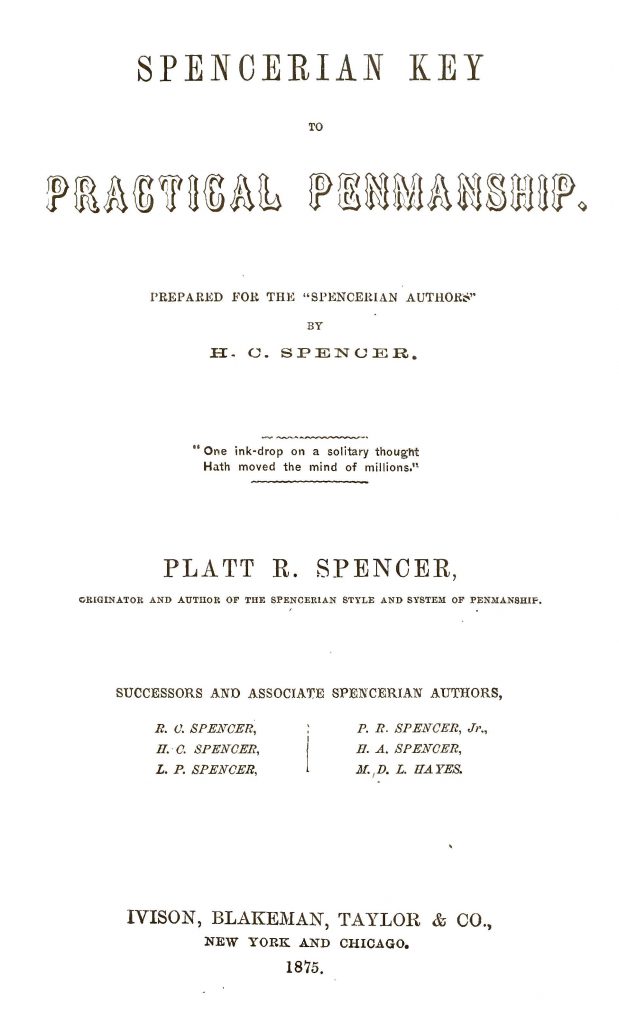By Geoffrey Fuller 6/3/2021, updated 10/26/2021
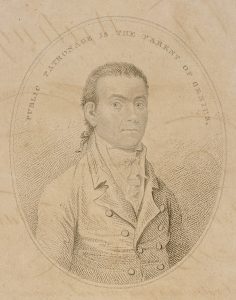
There are numerous styles of handwritten cursive that have been used during the last four centuries. Cursive handwriting can be defined as handwriting that connects the lowercase letters. Within this broad definition, there are both italic cursive types and looping cursive types.
A fine example of an italic cursive type is the Getty-Dubay Italic cursive method. Italic cursive is distinguished by the use of both a connected cursive letterform as well as an unconnected form. Also, the italic unconnected letterform is almost identical to the connected letterform.
In contrast, looping cursive methods primarily have only one letterform. A fine example of a looping cursive type is Spencerian. Although later methods of cursive did also teach a manuscript letterform, the manuscript letter form is entirely separate from the looping cursive form. An example of a handwriting method that taught both manuscript and looping cursive is D’Nealian.
In this article, I focus on the handwritten looping cursive types that have been used in the United States. Even within this area of focus, there is a wide range of handwritten cursive types and styles that have been used at different times.
Through each style, cursive evolved over time. Still, the beauty of the well-crafted and practiced handwriting remained, from the beautifully flowing flourishes of Spencerian to the tempered but mechanically fast Palmer Method. They are all beautiful, with their own strengths and qualities.
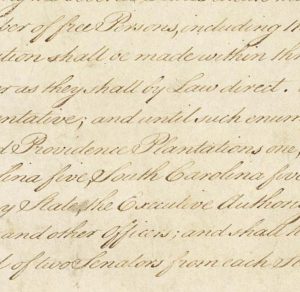
The earliest cursive type used in the United States was primarily imported from England and is found in the early documents that built America. This cursive style is generally called English Roundhand.
This cursive type was also used in printing, where it was engraved into copper plates. As the name suggests, English Roundhand is sometimes referred to as Copperplate because of its use in early printing. The classic instruction manual for this cursive style was “The Universal Penman,” initially published in London in 1733 by George Bickham.
English Roundhand can be seen on many of the oldest documents in US history. The Constitution and the Declaration of Independence were handwritten in English Roundhand cursive. Until the late 18th century, English Roundhand remained the primary style of cursive in the US.
John Jenkins developed the first truly American style of cursive. In 1791, Jenkins published the first edition of “The Art of Writing, Reduced to a Plain and Easy System.”
The Jenkins system of cursive handwriting began to take hold as it was increasingly taught in American schools. Being the first entirely American handwritten cursive type, it had solid support from elite writers such as John Adams, Benjamin Franklin, and John Hancock.
His second version, published in 1813, firmly replaced English Roundhand as the primary cursive style in America.
In the 1860s, a new cursive style emerged, known as Spencerian Script. Platt Rogers Spencer, whom this handwritten cursive type is named, developed a new method of cursive that was faster, more legible, and yet still elegant.
His children later published Spencerian Script in 1866 with the teaching manual, “Spencerian Key to Practical Penmanship.” Spencerian script remained the dominant cursive style taught and used up until the early 1900s.
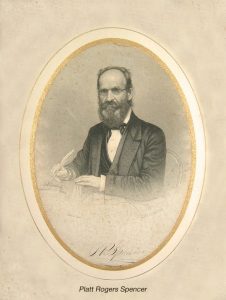
Spencerian script was the last cursive style that used the extended form with certain cursive letters. Within Spencerian lowercase letters, there were short letters like the cursive w, semi-extended letters like the cursive d, and extended letters like the cursive h.
Extended cursive letterforms were also applied to the downward looping letters that extend below the baseline, like the cursive p or cursive f. An example of a short-extended letter is the cursive p, which extends just past a third of a line below the baseline. An example of an extended downward looping letter is the cursive f. The cursive f extends two-thirds of a line below the baseline.
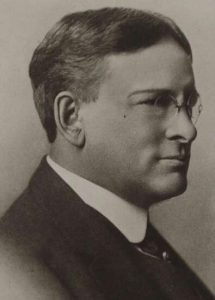
This extended cursive letterform is included in Spencerian script, John Jenkins method, and English Roundhand. After Spencerian Script, extended lowercase cursive letters were abandoned. Some writers have expressed issues with the extended lower looping letters because they interfere with the following line of writing.
Letters like the cursive f, which had previously extended farther below the baseline, had to be spatially avoided in the following line of writing to avoid overlapping letters. Cursive letters overlapping from two separate lines look disorganized and lacks aesthetics. This is a fair point considering that proper cursive uses consistent degrees in the slant angles, making overlapping cursive letters harder to distinguish.
Issues aside, I like the extended lowercase letters. I think they add flair to the handwritten cursive script by breaking up monotonous strings of letters at the same height. However, back then, since cursive writing was increasingly required in all levels of society and business, consistent letter height increased valuable qualities such as speed and legibility.
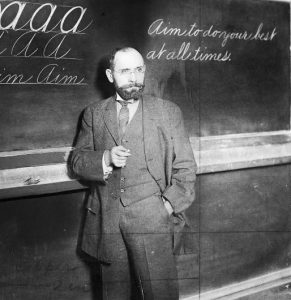
The next prominent cursive style to emerge in America was the Palmer Method. This handwritten cursive type was developed by Austin Palmer and published in 1894 as “Palmer’s Guide to Business Writing.”
The Palmer Method brought several changes to cursive, with the whole arm muscle movement being the most significant. This method introduced the physical form of using only arm movements to write, expressly excluding finger movements. The rationale related to the arm having larger muscles than the hand, which reduced fatigue.
The Palmer Method of handwritten cursive was intended to be very quickly written, clearly legible, and still elegant enough for business correspondence. Part of the reason for the emphasis on speed was the competition with the increasingly used typewriters.
The introduction of the Palmer Method of cursive eventually led to substantial book sales and several awards. Part of the reason for this success was the emphasis on every student having a copy of the book. To this extent, Palmer emphasized the need to abandon copybooks of the past. He stressed the importance of learning the mechanics of cursive writing with the arm for speed and legibility, rather than merely copying examples repeatedly.
One of the hallmarks of the Palmer Method handwritten cursive type was rhythmic and timed exercises made up of simple shapes, created to train the arm muscles. Before the Palmer Method, students had extensively used copy books to trace over prewritten letters, which taught precision over speed. However, by the 1950s, the Palmer Method cursive style was phased out and replaced.
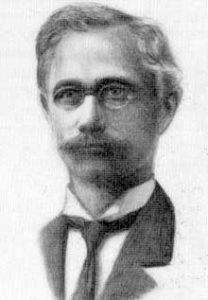
In the late 1940s, schools began teaching manuscript handwriting first, then cursive handwriting second. Manuscript is the method of handwriting that uses a separation between letters, commonly referred to as printing.
In 1948, Charles Zaner and Elmer Bloser published their cursive method, the Zaner-Blosser method. By the 1950s, the Zaner-Bloser method had become the dominant teaching method for handwriting in America.
The Zaner-Bloser method was the first major published method to teach manuscript letterforms first. After the students had sufficiently learned manuscript letterforms, then cursive was introduced to the students. The rationale behind teaching manuscript letterforms first was to allow students to begin handwriting at an earlier age.
The more simple manuscript letterforms were easier to teach to younger students, which allowed the students to begin written expression at an earlier age. The Zaner-Bloser method begins with teaching very simple letterforms without any slant or letter connection.
Though the Zaner-Bloser Company is better known for their manuscript first then cursive method, they did publish their first method in 1904. “The Zaner Method of Arm Movement Writing” was published by the Zaner-Bloser Company in 1904, and was generally considered a simplified Spencerian method. It also incorporated some of the Palmer Method arm movement practice techniques.
The D’Nealian method was published in 1978 and became the primary competitor to the Zaner-Bloser Company. The D’Nealian method was based on the same principle of teaching children manuscript handwriting first. Then, later, cursive would be introduced to the students in a later grade.
However, the D’Nealian method taught manuscript handwriting with a slant. The founder of D’Nealian, Donald Thurber, thought that learning manuscript letterforms with a slant would create an easier transition to cursive for students.
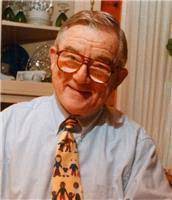
From here, it’s been a slow decline for cursive handwriting in America. The Common Core State Standards Initiative, supported by the National Governors Association and the Council of Chief State School Officers, has introduced education standards for schools. The Common Core Standards, which do not require the teaching of cursive, have been adopted by a majority of the states. Some states are still teaching cursive, but it’s no longer an educational standard.
However, cursive is currently experiencing a period of rediscovery. There is an emerging trend that is seeking to bring back the personalization that cursive handwriting possessed.
Today, the remaining school programs that still teach cursive primarily use either the D’Nealian or Zaner-Bloser method. Both the Zaner-Bloser and D’Nealian handwriting methods are still in print.
I enjoy writing in cursive and practicing cursive. I particularly enjoy many of the exercises used in the Palmer Method, such as the rhythmic repetitions of circles using only arm movement. The Palmer Method exercises have an almost meditative quality that I find relaxing. In terms of pure aesthetics, I tend to favor English Roundhand because of its flourished and extended cursive letterforms.
There are some additional images below with descriptions from the original publications of the writers in this article. I also gave a few image examples of the cursive extended letterform. If you enjoyed this article, I also wrote an article about the potential benefits of cursive used with current technology, linked here.
This is a page from “The Art of Writing, Reduced to a Plain and Easy System”, by John Jenkins, first published in 1791. Note the reference to the slope angle. A consistent angle is an important element of cursive.
This is another page from “The Art of Writing, Reduced to a Plain and Easy System”, by John Jenkins. Notice the fully extended cursive h on the right page.
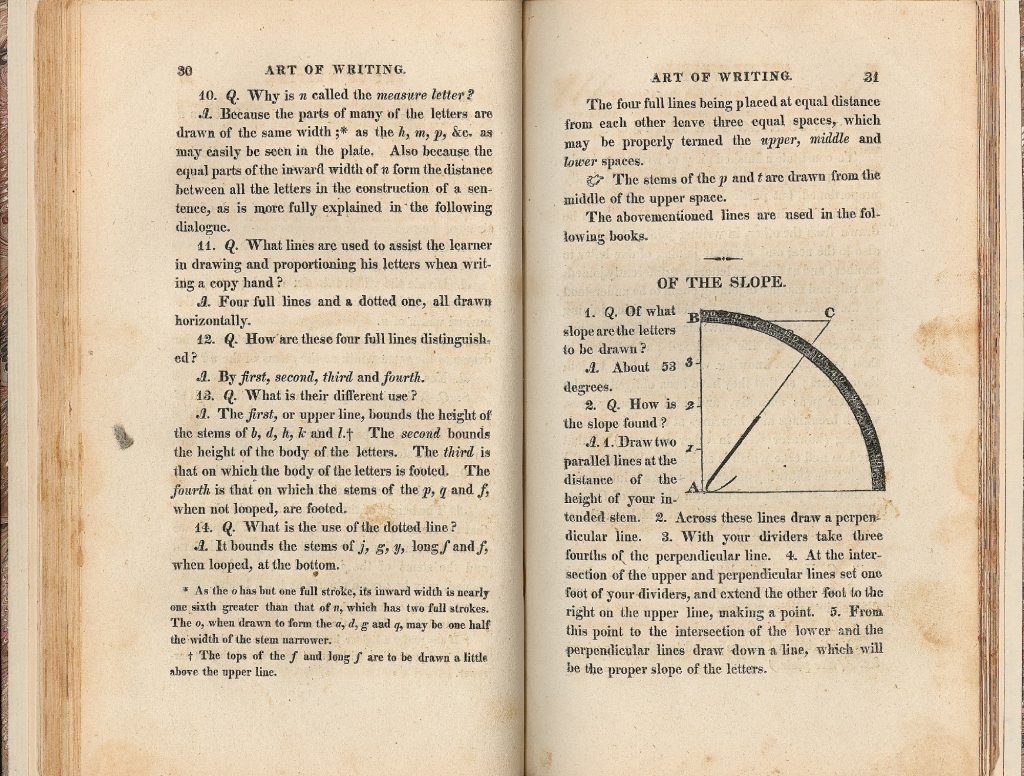
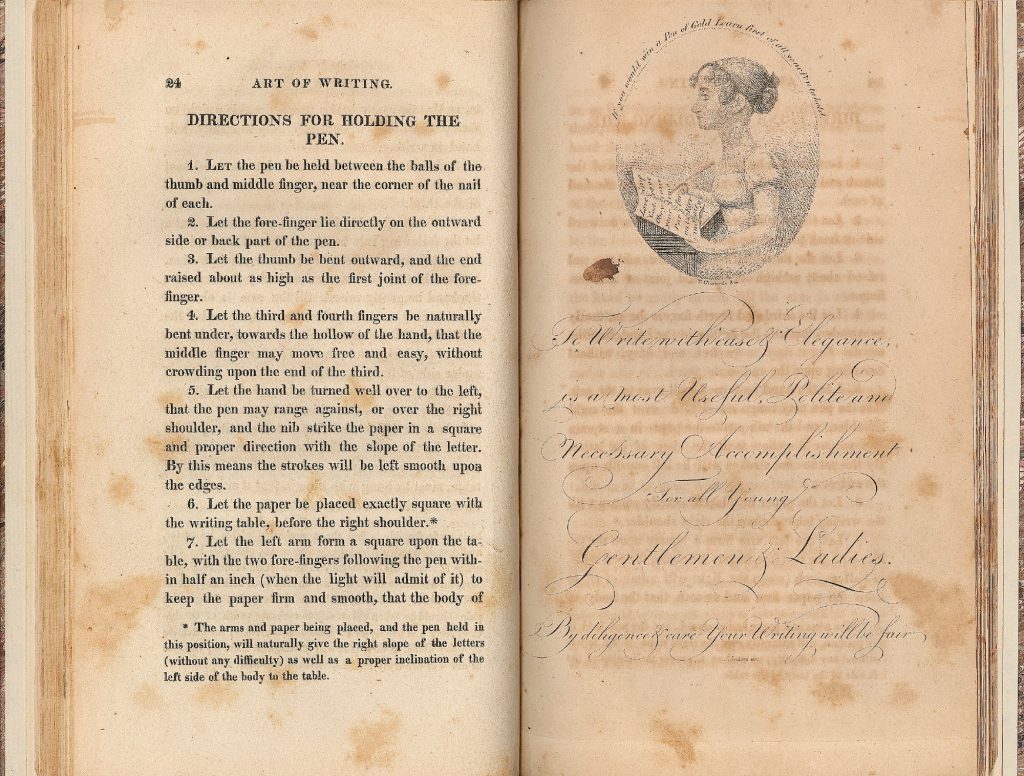
This is a page from Platt Rogers Spencer’s “Spencerian Key to Practical Penmanship”, published 1866. Notice the reference to the Extended Letters. Spencerian Script was one of the last cursive types to use the extended letterforms.
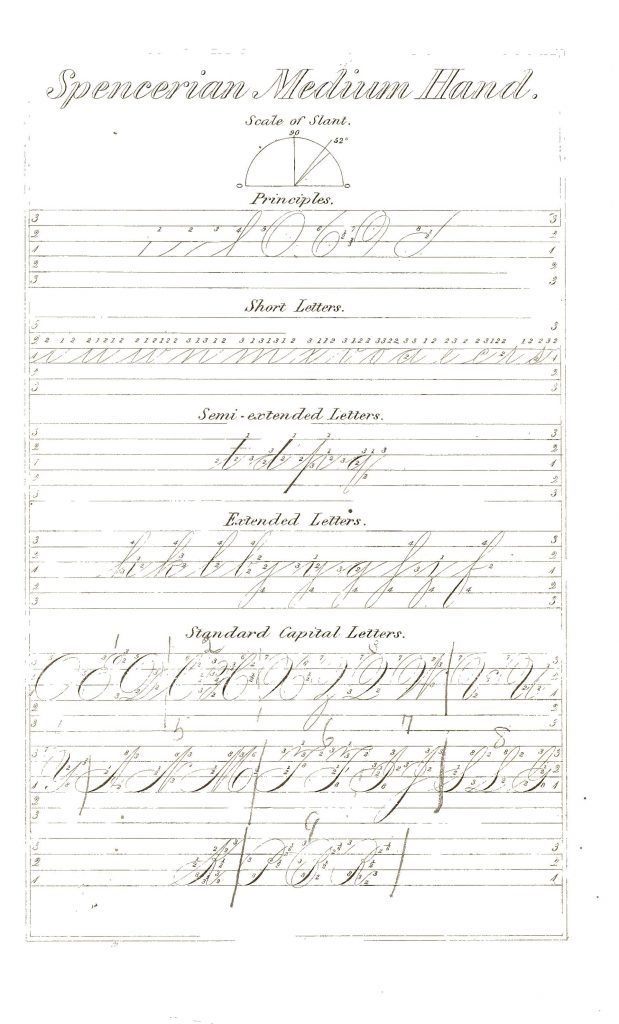
This is a page taken from Austin Palmer’s “Palmer’s Guide to Business Writing”, published in 1894. This type of cursive was designed to be written rapidly. Notice the larger separation between the letters, and the shorter cursive h.
This is the cover of Austin Palmer’s “The Palmer Method of Business Writing.”
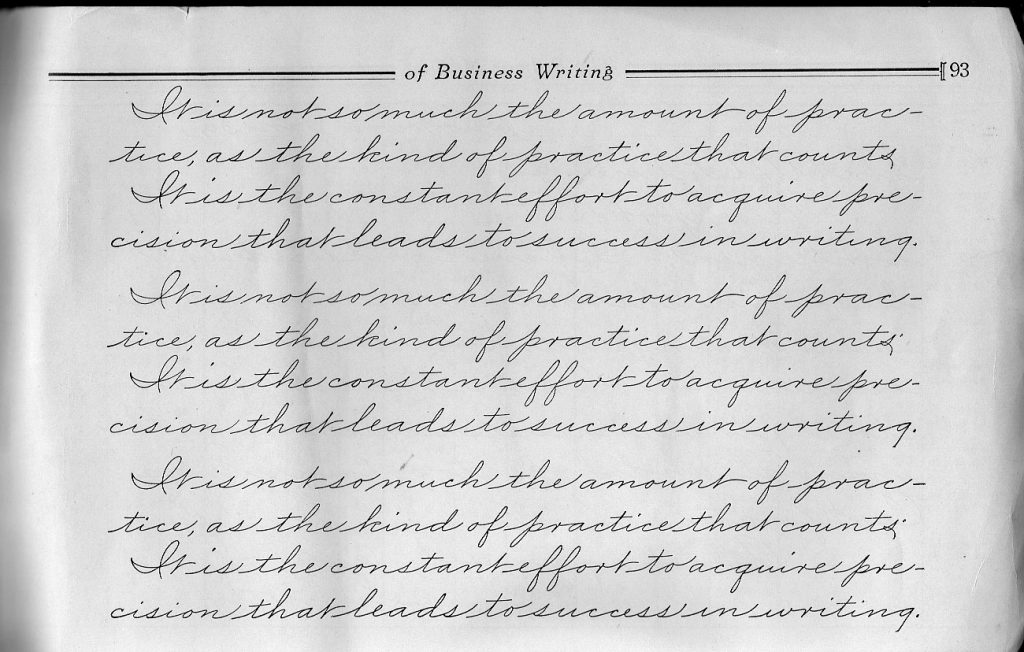
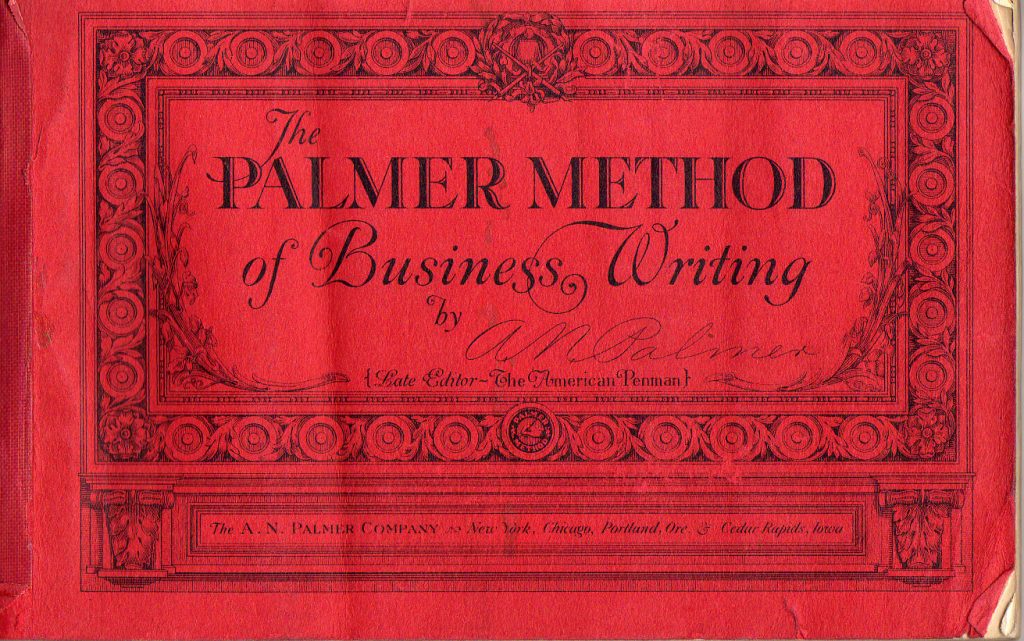
This is the introduction page from Platt Rogers Spencer’s “Spencerian Key to Practical Penmanship.”
